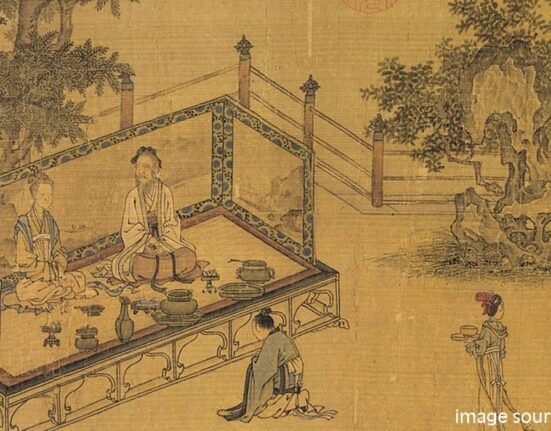The word ‘family’ defines a group of individuals united by blood, or by marital, adoptive or other intimate ties (APA). As Winston Churchill stated, “ There is no doubt that it is around the family and the home that all the greatest virtues are created, strengthened and maintained”. The primary source of your personal development is your family. The family in which one grows up plays a role in their mental health. You may have been confronted with a lack of communication, misunderstandings, disagreements, and so on among family members right? This may lead to disruption in the family structure. Family therapy/counselling could help with this. So first of all let’s see what is family therapy and what are the different types of approaches to resolving issues.
What Is Family Therapy?
Family therapy is a structured type of psychotherapy that aims to minimize distress and conflict in a family by enhancing the family interaction system thus improving the health and functioning of a family. Some of the common issues we see in family therapy sessions are communication problems, anger, and financial distress.
And some other issues are:
- Parenting issues
- Work stress
- Financial problems
- Substance abuse
- Divorce/ separation
- Couple relationships
- Physical/emotional abuse
- Eating disorders
- Loss & grief
- Child & adolescent behaviour
Specific Goals of Family Therapy
- Facilitate and improve communication
- Shift and change inflexible roles, rules and coalitions
- Model, educate and myth-dispelling
- Strengthen the family system
- Understand and handle challenging family situations
- Increase separation and individuation of family members
- Strengthen the relationship between parents
- Solve family problems and improve the home environment
Types of Family Therapy
1. Bowenian Family Therapy:
The theory behind this therapy was developed by Dr. Murray Bowen. According to Bowen’s theory, differentiation of the self is the key to emotional independence and ultimately conflict resolution. Therefore, one of the main goals of Bowenian therapy is to help foster self-differentiation among family members. This therapy helps to reshape conflict, set healthy boundaries between members, make you understand your family pattern, and teach individuals to differentiate.
2. Systemic Family Therapy
The most relevant beginning of this therapy was due to the anthropologist, Gregory Bateson and his team at Palo Alto Hospital. The therapy focuses on relationships between a group of individuals, rather than just on an individual’s thoughts and feelings. They examine how a cohesive social unit is established and how its members interact with one another to meet. Through this therapy, it helps individuals improve impulse control, develop appropriate social skills and make them understand how family dynamics influence their actions.
3. Structural Family Therapy
This therapy was developed by Salvador Minuchin. The therapy looks at the structure of a family unit enhances interactions among family members and advocates changes in the rules that govern how the family functions. Through this therapy, it helps families impacted by trauma, single-parent families, divorces and their children, and intergenerational families.
4. Strategic Family Therapy
It was developed by Don Jackson along with a colleague. The therapy focuses on changing how family members interact with one another. For that they use cognitive restructuring (Beck) to modify the way family members view one other, which changes the impact between them, thus allowing them to interact in a new way. Through this therapy, it helps improve family cohesiveness, communication and parenting behaviours.
5. Narrative Family Therapy
It was developed by Michael White and David Epston. The therapy focuses on how all people construct internal stories of their lives, reducing and compressing the variety of lived experiences into controlling themes influenced by family, culture, and society. Through this therapy, it allows people to use their voice for good, assisting people in becoming experts in their own lives and living in a way that reflects their goals and values.
6. Psychoeducation Therapy
The term ‘ psychoeducation’ was first employed by Anderson et al. Psychoeducation is a combination of cognitive-behavioural treatment, group therapy, and education. The primary goal is to educate clients and families about all aspects of the condition and its treatment so that they can work with mental health experts for a better overall outcome.
Also Read: Influence of Family Harmony on Teens
Techniques Used In Family Therapy
- Behaviour Approach: Family therapists assist family members in addressing specific problems, they also focus on skill training and psychoeducation. A therapist, for example, may use role-playing to assist family members in resolving family issues.
- Structural Approach: The family therapist initially joins as a part of the family, they give support to the family structure that currently exists, monitoring content for clarification, and mimicking the family’s style of communication. Secondly, they use diagnosis to understand the pattern that gives rise to symptomatic behaviour. Finally, restructuring operations are designed to recreate communication channels and also
to mark boundaries. - Strategic Approach: Family therapist uses positive connotation which is similar to reframing that alters view on behaviour. The other technique is directives which refers to direct instructions on how/what to change. The next one is covert change, that is praising desired behaviour and ignoring non-desired behaviour. Hypothesizing is also used, here the therapist would ask what would happen if statements.
- Systemic Approach: Family therapist uses circular questioning which is designed to elicit thoughts about the relationships between the family members. They expose a person to other people’s perspectives as well as the variances in how family members perceive things.
- Psychoeducation: Family therapists assist family members in better understanding mental health concerns. This method is useful for learning more about medication, treatment methods and self-help methods. The primary purpose is to assist family members in functioning as a support system.
Effectiveness of Family Therapy
Family counselling services can be beneficial for a variety of reasons. Some of the common benefits are:
- Improves communication among family members
- Strengthen relationships/familial bonds
- Develop healthy boundaries
- Improve parent-child communication
- Build successful families and marriages for couples
- Process bereavement in case of loss and despair after the death of loved ones
- Define the familial roles of each member of the family
- Develop coping solutions when life changes take place and adapt to it.
- Resolve conflict and improve the family’s problem-solving abilities
Moreover, a study reported that family therapy is best for treating Anorexia Nervosa in adolescents (Blessitt et.al,2015)
Risks Related To Family Therapy
- Family therapy can be especially tough and stressful for children and adolescents since they may not completely comprehend the relationships that take place during family therapy. Therefore, individual therapy by the same therapist or other therapist who is aware of the family therapy would be beneficial.
- The main risk in family therapy is the potential disturbing of personality barriers in person or relationships that were already vulnerable when
therapy began. - Intensive family therapy may also be challenging for family members who have been diagnosed with psychological problems.
Questions
By asking questions to the therapist it can reduce your anxiety regarding the therapy and also helps the therapist to design appropriate treatments for you. The question commonly asked by the client could be, What to expect in the session?
The therapist could then provide the background of the approach and also may reduce your fear preoccupied with the therapy and calm you. During the first session, you can expect your therapist to ask you a lot of questions.
Some of the common questions are:
- What are the main problems you are experiencing? (The therapist, for example, may ask about your family history, your relationship with one other in the family, current problematic situation and so on).
- How do each of you in the family feel about the situation?
- When and where does the problem occur?
- Where were various family members when a problem occurred?
- Who in the family had similar problems?
- With whom is the power (money, decision, time) in the family?
- What are the effects on each family member due to the problem?
Conclusion
Thus, you have learnt that family therapy can help families overcome conflict, enhance communication and, and work together to achieve mutual goals. And also it could make your family acquire the adaptive qualities of a healthy family.













Leave feedback about this